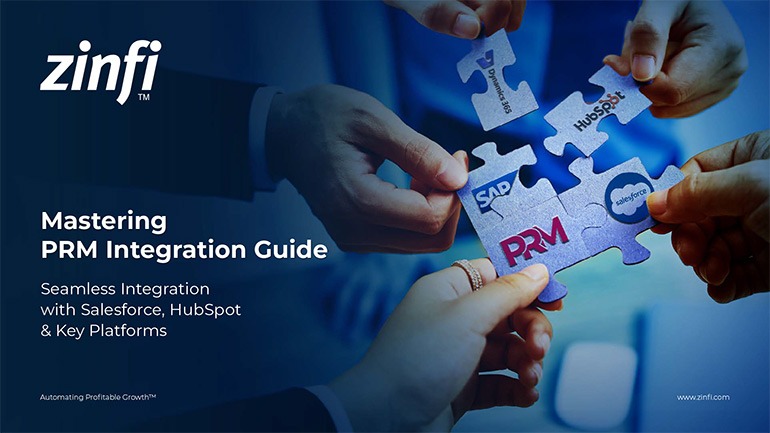Glossary - How to - Co-op Marketing Best Practices
How to Implement Co-op Marketing Best Practices?
Introduction
In today’s competitive business landscape, co-op marketing has become a crucial strategy for brands and their partners to drive sales and brand awareness efficiently. Co-op marketing refers to a collaborative marketing effort between a brand (manufacturer, vendor) and its channel partners (retailers, resellers, distributors) where both parties share the cost of marketing initiatives. This approach maximizes resources, expands reach, and ensures cohesive brand messaging.
Partner Relationship Management (PRM) platforms help streamline co-op marketing efforts by automating fund management, campaign approvals, and performance tracking. Through a well-structured PRM system, businesses can ensure compliance, improve ROI, and build stronger relationships with their partners.
Key Takeaways:
- Establish Clear Guidelines for Co-op Marketing:
A successful co-op marketing program starts with well-defined guidelines. Brands should outline the eligibility criteria, reimbursement policies, and branding standards to ensure alignment with corporate messaging.
- Provide partners with a marketing playbook detailing approved advertising channels, content formats, and branding requirements.
- Define the approval process for marketing campaigns, ensuring consistency and compliance.
- Use PRM platforms to automate fund allocation and tracking.
- Offer Flexible and Scalable Funding Options:
Co-op marketing programs must cater to partners of varying sizes and capabilities.
- Implement a tiered funding model where high-performing partners receive additional incentives.
- Provide pre-approved marketing templates to simplify campaign execution.
- Leverage a performance-based reimbursement model to encourage partner participation and innovation.
- Leverage Digital Marketing Channels Effectively:
Digital campaigns that offer greater reach and measurable results replace Traditional marketing methods.
- Support partners with PPC (pay-per-click) advertising funds to increase local visibility.
- Provide access to co-branded content such as social media ads, landing pages, and email marketing templates.
- Encourage partners to use data-driven marketing tools to track customer engagement and optimize campaigns.
- Monitor and Optimize Performance Regularly:
Without performance tracking, co-op marketing funds may be misallocated or underutilized.
- Establish KPIs (key performance indicators) such as lead generation, conversion rates, and customer engagement.
- Use PRM analytics dashboards to track real-time performance.
- Provide quarterly reviews and training sessions to help partners optimize their marketing strategies.
- Ensure Compliance and Brand Consistency:
Inconsistent messaging can dilute brand identity and reduce campaign effectiveness.
- Enforce branding guidelines to maintain consistency across partner campaigns.
- Implement an automated approval system within a PRM platform to review campaigns before launch.
- Offer co-op marketing training programs to educate partners on compliance and best practices.
Summary of Key Takeaways:
- Define clear co-op marketing program guidelines.
- Provide flexible funding options to support partners.
- Prioritize digital marketing strategies.
- Monitor and optimize performance with analytics.
- Ensure compliance and brand consistency through PRM tools.
Key Examples:
- Automotive Manufacturing: Car manufacturers can co-fund dealership advertisements that promote new models, financing deals, and seasonal offers. Digital ad templates and social media assets ensure brand consistency across multiple locations.
- Consumer Electronics: Electronics brands partner with retailers to launch co-branded online promotions, influencer collaborations, and exclusive product showcases to increase brand visibility and drive sales.
- Energy Production: Renewable energy firms collaborate with local distributors on awareness campaigns about energy efficiency rebates, leveraging social media and targeted PPC advertising.
- Financial Services: Banks and credit unions use co-op marketing funds to support financial advisors in running localized campaigns on mortgage loans, credit cards, and investment plans.
- Food and Beverages: Fast-food chains provide franchisees with co-branded marketing kits, including social media templates and local radio ads, to promote seasonal menus and special offers.
- Healthcare Services: Pharmaceutical brands co-market with clinics and pharmacies to educate consumers about new medications and treatment options through brochures, webinars, and online campaigns.
- Information Technology: Software vendors co-fund webinars, whitepapers, and Google Ads campaigns with their resellers to generate leads and promote new product features.
- Pharmaceutical Development: Drug manufacturers collaborate with healthcare providers to run awareness campaigns about new treatments, ensuring compliance with industry regulations.
- Retail Industry: Retail chains leverage co-op marketing funds to support store-specific promotions, loyalty programs, and holiday sales campaigns.
- Telecommunications: Internet service providers work with resellers to offer bundled packages for co-funding local advertising on social media and print media.
Conclusion:
Co-op marketing is a powerful tool that benefits brands and their partners by maximizing marketing impact while reducing costs. Companies can optimize their co-op marketing efforts by implementing best practices such as clear program guidelines, digital marketing strategies, performance tracking, and compliance enforcement. Partner Relationship Management (PRM) platforms are crucial in streamlining these initiatives, ensuring efficiency, transparency, and long-term success.
By following these co-op marketing best practices, businesses can strengthen their partner relationships, enhance brand visibility, and drive revenue growth.
Associated Keywords:
- Co-Op Marketing Strategy
- Co-Op Advertising Best Practices
- Channel Partner Marketing Optimization















